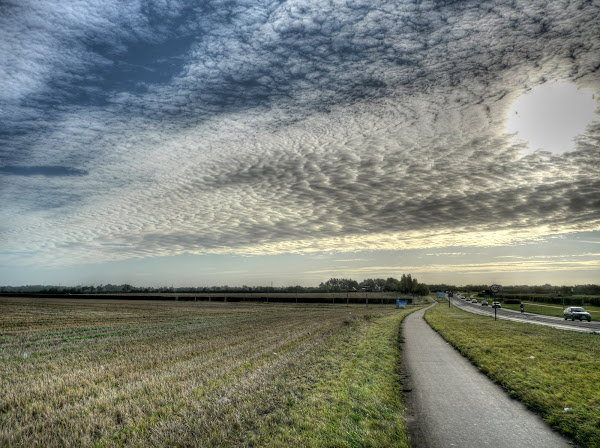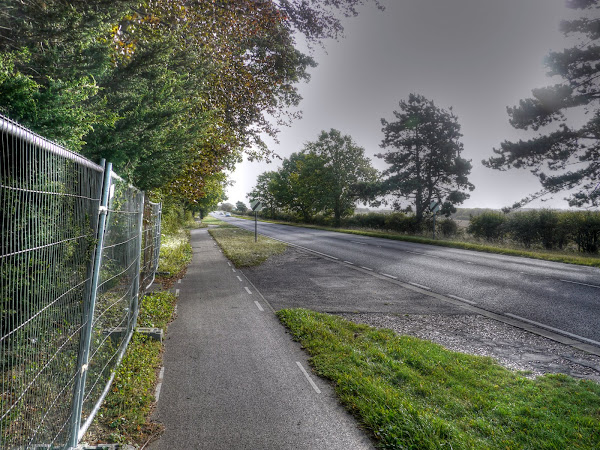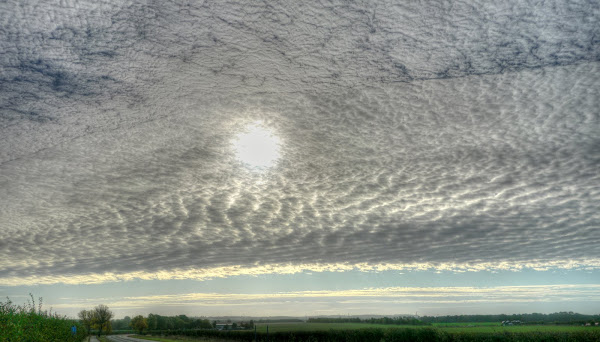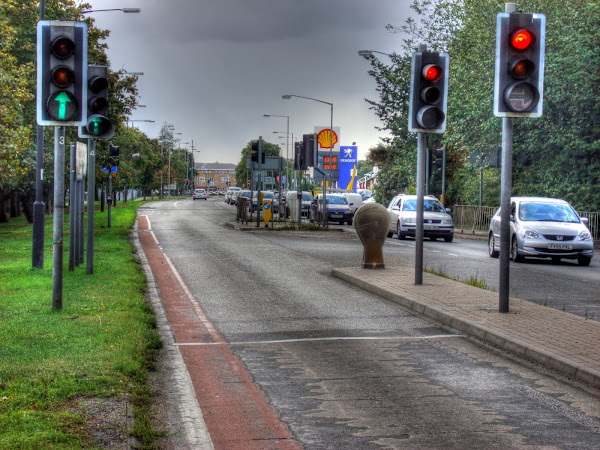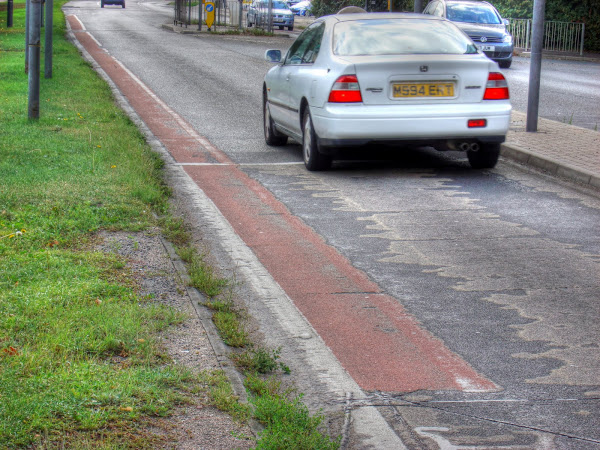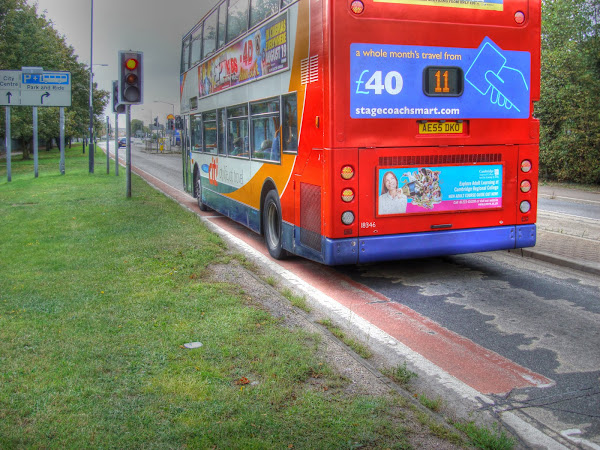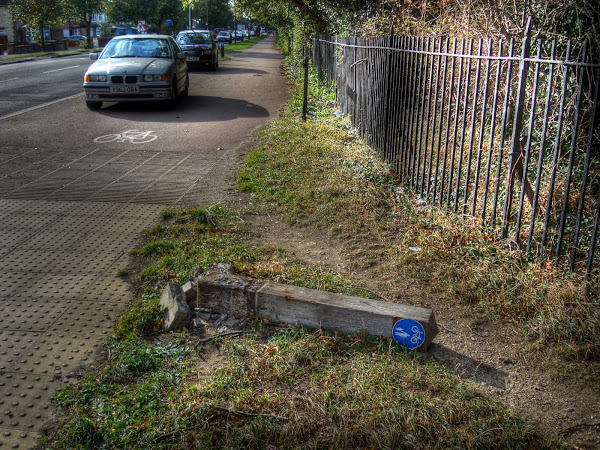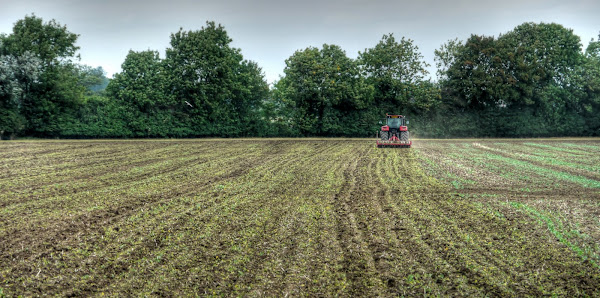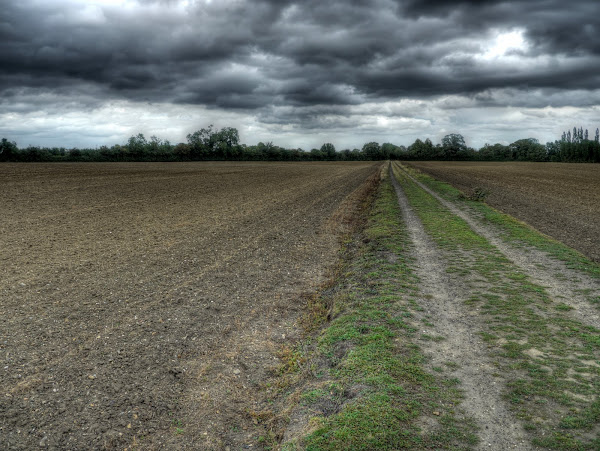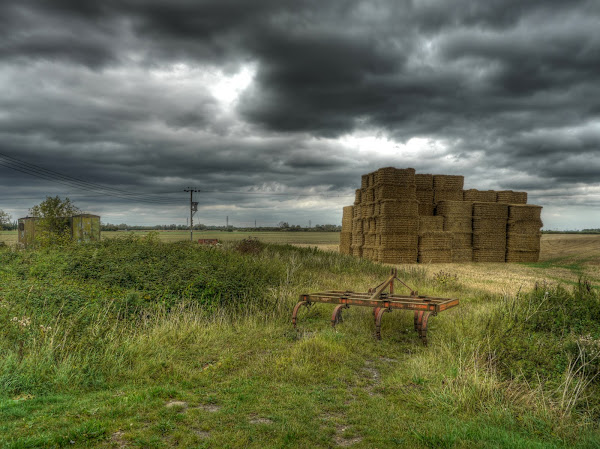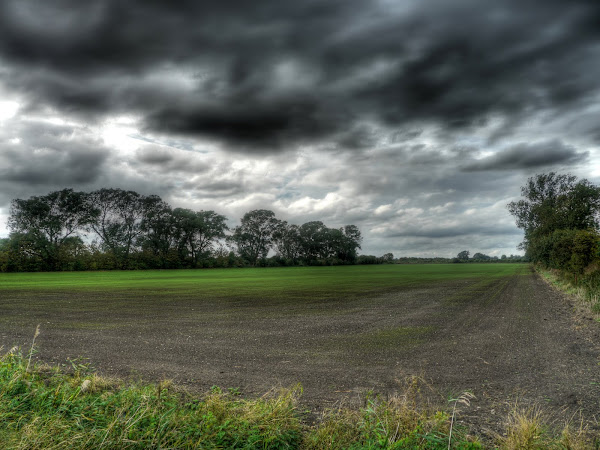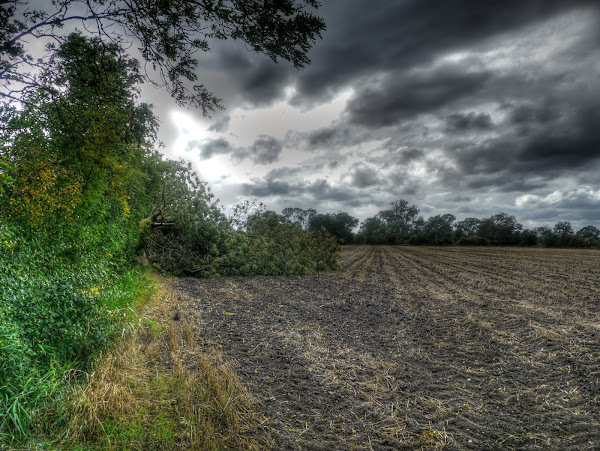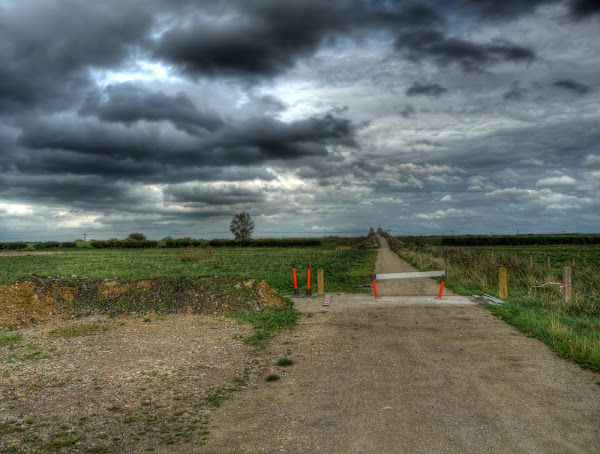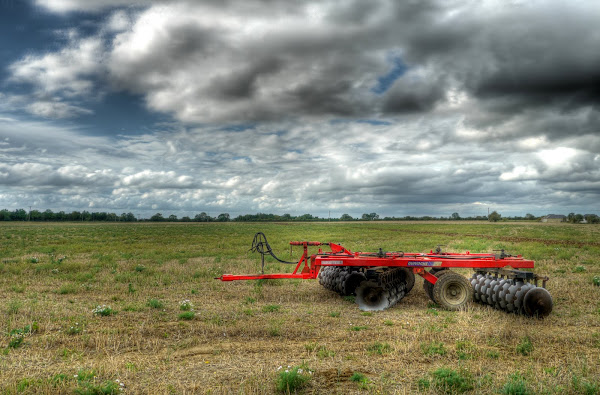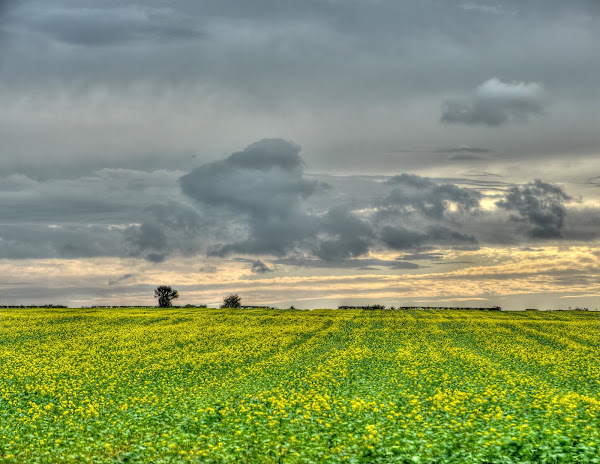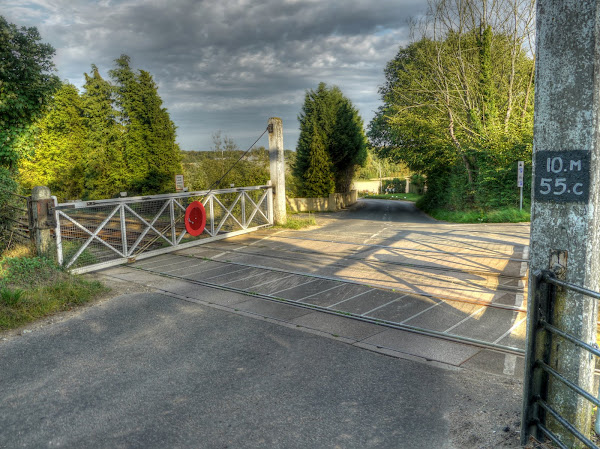Saturday, 3rd September: They say bad things come in threes, well Saturday was delightful. Although if you follow the link you will there was also some wind, but it was so nice I must have forgotten all about it. I just remember it as sunny, warm, but ideal for cycling day.
I was planning to pop up the CGB (Cambridge Guided Busway) to see how they are getting on with raising the area of cycleway that floods up near St Ives. In fact I have been meaning to visit that area of the CGB for a while. But I didn’t it was such a nice day I wanted to get out into some rolling countryside. Which around here means heading out to Suffolk, well there other places, but perhaps not quite as near to Cambridge.
I took a fairly direct route out of Cambridge, first along NCN51 and then pealing of along to Six Mile Bottom, more or less in a South Easterly direction. Here is the Bike Route Toaster Link. I was actually planning to go a little further – the route on the map is around 65Km/40 miles and I was originally thinking that I would cycle for 80Km/50 miles. But events conspired against me. Looking at the elevation trace of the route I could have called this the Twin Peaks ride – although that might be construed as false advertising unless you are a flatland dweller. The route does take you up to 120m, twice, but the dip between the “peaks” only drops to 75m or so.
The first bit of the ride after NCN51 is not so pleasant. It is a straight, thin road but also a convenient way through to the A11. So you the cars really do whizz by. In places the road camber is also slightly odd and can catch unwary drivers out. Having said that it wasn’t that busy and most cars seemed to have heard of the Highway Code Rule 163. I have thought about getting a T-shirt with something along the lines of “Highway code – 163 Do U Know it?” printed on the back – but I don’t think my back is big enough.
My daughter who has recently passed her driving test has observed how few other motorists seem to give cyclists their due overtaking space. (It was a rule I made sure she was aware of from the start!) The trouble is some cycle lanes basically give permission for motorists to ignore the rule (at all times). Ty cycling along Newmarket Road in Cambridge. As you can see there is a “car lane”, a bus lane and a cycle lane. Unfortunately the cycle lane just eats into the Bus lane. This means that the unwary cyclist can find themselves being dragged along as buses pass within inches. The trouble is that when a double-decker bus passes you even at say “only” 25mph the bus is so large and the gap so small the cyclist gets buffeted by the buses slipstream. It is so unpleasant that I rarely cycle this way.
In my mind this cycle lane is an example of how the danger for cyclists. It gives a false sense of security to the cyclist and yet gives permission for the bus driver to pass the cyclists with very little clearance.
View Larger Map
Six Mile Bottom lies on the route of the Ipswich to Ely railway line, but the station closed in January 1967. I could have cycled straight on along the Brinkley Road but chose instead to detour down the A1304 and then onto the Six Mile Bottom Road towards West Wratting.
It is on this road where you get a better sense of the gently rolling countryside, especially as you have to do a little climbing yourself up past Lark Hall Heath Farm and on towards Lark Hall. This view is looking towards the North-East. Although I tend to think of this part of the UK as being more about arable agriculture with vast yellow fields of oilseed rape there are quite a few patches of trees as well. This picture was made from two HDR pictures stitched together using Photoshop Elements 9.

This is the view looking along the road, these conifers are quite a common sight in this part of the world. They look rather odd with their spindly trunks and I have always assumed they were there to provide a windbreak and were perhaps resistant to the winds. As you can see having climbed a little the time the rolling countryside – well rolls. When you reach Lark Hall Corner then it is definitely climbing time. There corner is at around 56m and you quickly “climb” to 84m followed by a longer drag up to 101m At this point the Icknield Way path crosses the road. It is a byway that I cycle between Balsham and a pumping station.
The next climb is “up” through West Wratting which takes you from around 100m to 120m. (There is an estate in West Wratting – West Wratting Park that looks rather nice.)
It was going down this dip that some sort of stinging insect somehow managed to crash through the gap between my sunglasses and my eye and sting me just under the eye and leave bits of insect debris in my eye. I think it was a wasp as it felt quite big as I pulled it out, but it wasn’t furry enough for a bumble bee. It was quite a shock to see reported in the press a few days later that a cyclist was believed to have crashed and died because of a fly in his eye. My condolences go to his family.
As is usually the case in such reports it mentions that he was wearing a helmet but did not have “protective glasses” and was travelling at just over 40mph when he crashed. The explanation for the wobble and crash was conjecture rather than fact.
The Highway code does make a point of the fact the cyclists can and do wobble from time to time – even the most experienced. I once got fly in each eye fortunately I was not on a busy road or going very fast and managed to stop on the grass verge. Apparently mosquitoes are on the rise so something else to watch out for.
It was a lovely day and so my plan was to carry on to Withersfield and then see about looping back. On the way through before reaching Withersfield on Skipper’s Lane you pass what looks like an old airfield. It used to be RAF Wratting Common and thousands of sorties were flown from this airfield. Most recently there was a Memorial event held there. Here is a more personal account of the airfield.
It would seem that one of the first casualties of the defence cutbacks has been the RAF website – its references to historical airfields seem to have gone. Whilst I acknowledge that costs have to be cut it seems a bit of modern vandalism to delete that sort of history from the web. Books cost money to store but there would be an outcry if in the quest to save money the RAF burnt all the old Airfield Log books. I wonder if there is an institution that acts as a home for unwanted web pages?
After passing through Withersfield I cycled to the “sleepy village” of Great Thurlow and thought I would cycle along Water Lane a BOAT. There is quite a steep hill into Great Thurlow which my daughter and I have been down a few times on my Tandem. I expect it would be possible to break the 30mph speed limit without much effort down that hill. It is a good job the brakes on the Tandem were in good nick.
It wasn’t long before I reached the Water Lane turn off after passing through Great Bradley after a short distance the road is crossed by the River Stour – there is a ford. There was no water in evidence when I went through. I think that there passage for the water underneath the road, but when the river is high it overflows the road. When I was checking the map Water lane takes you up to Kirtling, but from the 50K OS map it was not that clear it was a right of way. The 25K OS map does clearly show it as a green dot road or BOAT though. (OS map keys – 25K, 50K, pdf).
You can get maps on the Ordnance Survey website – but I must be going a bit doolally it took me a while to find it – it is called getamap. (They have their old system still available here.) For some reason it doesn’t seem to be working at the moment. Cloud computing – great when it works. Oops after a few goes it is now working. I think I’ll stick with Streetmap.
What I did realise was that I had not actually followed the BOAT but diverted around the footpath along side Kirtling Brook to the left. I seem to remember doing that the last time as well.
Back to the ride – after crossing the non-existent ford I stopped to take a picture (the link is to a previous post when there was water) – again two pictures stitched together. The track – Water Lane is on the left and I think that the woodland on the horizon is Bradley Park Wood. Although the link to the Great Bradley Walks seems to suggest in might be Great Widgham Wood. No it is Bradley Park Wood, here is a map – which also shows Water Lane as the Newmarket Cycle Way. (And so apparently is the Swaffham Heath Road.) I also found this interesting website - wet roads showing the locations of Fords around the UK.
As I sat back on the bike and pedalled off I got that sinking feeling the sort that comes from having now air in the rear tyre. It was completely flat. So I hopped off, took the GPS and pump, tyre levels and a spare tube from my rack pack and turned the bike over.
I found the split after a while – which thinking about it was because it was windy and so hearing the air coming out was quite tricky. Try as I might I couldn’t find the cause of the puncture though. Normally I put patches on but in the interests of time didn’t this time. As I was fixing the puncture a lady walking her dog stopped and we had a little chat. She admired my small pump – great for carrying around, not so great for inflating tyres to much more than a moderate pressure though.
She also offered me help and let me know where she lived in case I had any problems getting going. That is one of the things I like about the countryside – people are generally much more trusting and friendly.
As I set off I did feel a little uncomfortable wondering if my tyre would deflate again, but it was ok, despite being a bit squidgier than I normally run my tyres at. The close look at the rear wheel also made me realise that I had another broken spoke. This wheel was a machine built wheel and whilst being inexpensive and a quicker way to replace my last wheel I can't help feeling you get what you pay for and decided to to have a hand built wheel to replace it. I have found that Ben Hayward Cycles hand built wheels have been much more reliable and far less likely to lose the trueness.

Kirtling Brook is actually part of a water transfer scheme used to transfer water from the River Ouse to the River Stour – and was first operational in 1972. This system is being enhanced and instead of relying upon a brook this part of the transfer scheme is being replaced by a pipeline. By the looks of things the pipeline is pretty much in the ground and now being covered. This picture was taken near when I took the wrong turn on Water Lane.
As you can see, here in the close-up, the pipeline is being covered.
The last time I cycled this way I carried on along other bridleways, this time, because of being delayed after fixing the puncture and to cut the risks of another puncture I took a more direct road route back. I headed back through Woodditton, Stetchworth and Dullingham. Stopping to take a few pictures of the clouds in the sky on the way.
It’ll not be too long before the leaves start turning.
This is one way to stop level-crossing jumpers – the level crossing next to Dullingham Station is hand-operated. Which presumably means when it is closed the safety margin is longer and so it blocks the road for longer. These crossing gates look quite old, or at least the stone posts thy hang from look old.
The view of the signal box looking towards Cambridge. This is a district line and not electrified. Diesels run along here and there are only two sets of tracks around the stations (I think).
After Dullingham you pass the Cambridge and Newmarket Polo Club, so I pulled over to take a picture. First I took a picture of this haystack on the other side.
This is a picture of Polo in action, or perhaps practice – I didn’t stay long enough to work out whether they were playing or not. There are 32 acres of tranquil open space.
After that I headed along the Swaffham Heath Road and took the NCN51 route back. The tyre was fine – there were no further mishaps.
![]()





